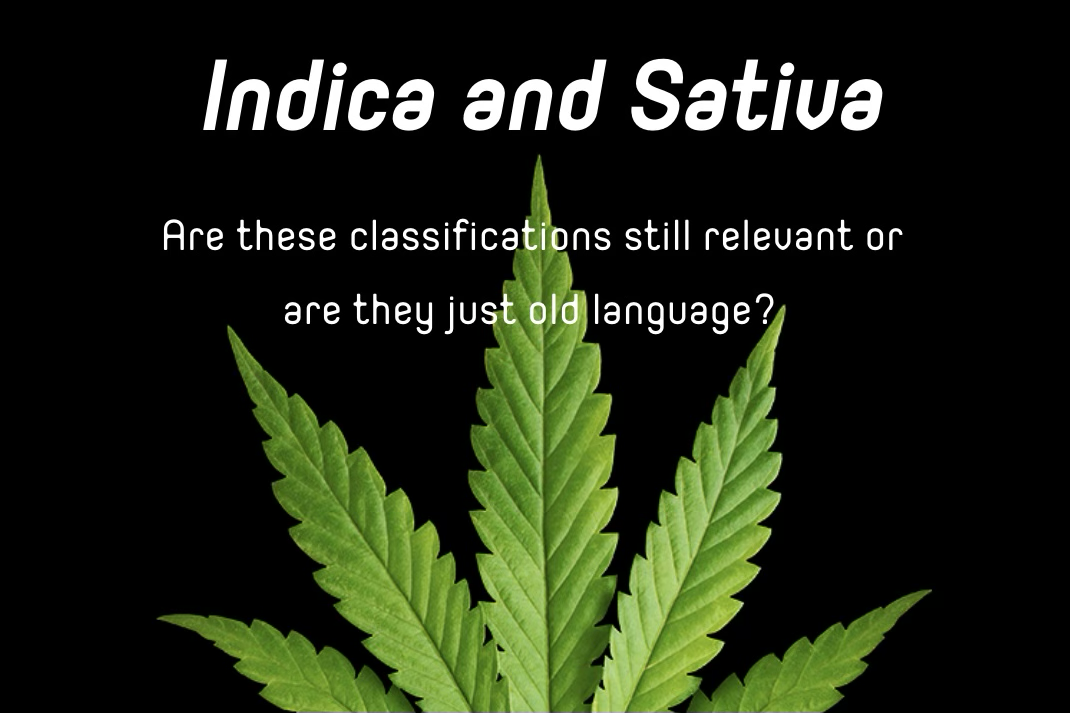Indica & Sativa - Dated Language

Almost 300 years ago indica and sativa were used to indicate where a cannabis plant originated from. Areas with weaker sunlight resulted in broader leaves and were referred to as indica (being that they were primarily coming from India), and sunny humid climates resulted in narrow leaves and light fluffy bud, giving us sativa.
Using these terms to describe plant architecture is fitting, but chemically they’re irrelevant. There is no evidence that the physical appearance of a cannabis plant results in different effects. In fact, most cannabis cultivars these days are hybrid, meaning the strain has a mix of both.
You can give the same plant, with the same genetics, to two separate cultivators and get completely different end results. And beyond genetics, how cannabis interacts with each individual user can create varying effects. When you experience sedative effects you are really feeling a combination of all the cannabinoids and terpenes (and other compounds) reacting with the chemistry of your body.
Since these classifications came about some 300 years ago, we have evolved as a people and an industry. As we navigate this industry we will learn that a lot of old thinking is, well, old. And we will further refine terminology and understanding of this plant. Although, given the tools and resources our ancestors had, they did a great job passing what they learned.
“While the cannabis community might feel comfortable with the terms sativa and indica for marketing purposes, it’s time to move on. The modern cannabis buyer deserves to be an informed consumer. They might be familiar with the labels of strain, sativa, and indica, but it’s time to spread awareness of chemical profiles and cannabis compound content. Terpenes need to be more normalized, and information needs to circulate to the public.” -Karhlyle Fletcher article for Cannabis Tech
Using these terms to describe plant architecture is fitting, but chemically they’re irrelevant. There is no evidence that the physical appearance of a cannabis plant results in different effects. In fact, most cannabis cultivars these days are hybrid, meaning the strain has a mix of both.
You can give the same plant, with the same genetics, to two separate cultivators and get completely different end results. And beyond genetics, how cannabis interacts with each individual user can create varying effects. When you experience sedative effects you are really feeling a combination of all the cannabinoids and terpenes (and other compounds) reacting with the chemistry of your body.
Since these classifications came about some 300 years ago, we have evolved as a people and an industry. As we navigate this industry we will learn that a lot of old thinking is, well, old. And we will further refine terminology and understanding of this plant. Although, given the tools and resources our ancestors had, they did a great job passing what they learned.
“While the cannabis community might feel comfortable with the terms sativa and indica for marketing purposes, it’s time to move on. The modern cannabis buyer deserves to be an informed consumer. They might be familiar with the labels of strain, sativa, and indica, but it’s time to spread awareness of chemical profiles and cannabis compound content. Terpenes need to be more normalized, and information needs to circulate to the public.” -Karhlyle Fletcher article for Cannabis Tech


Leave a comment